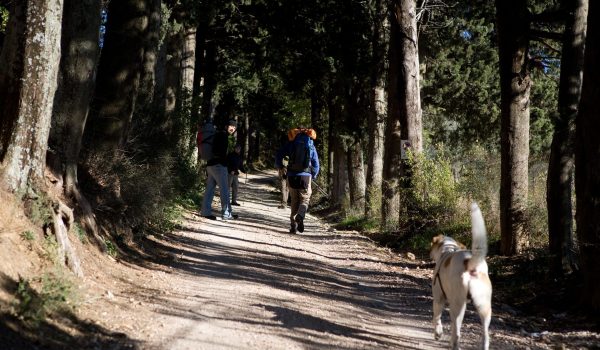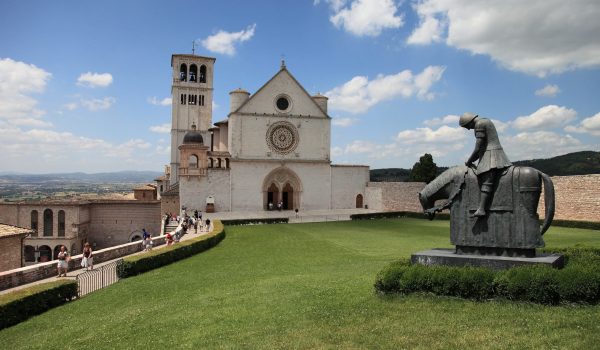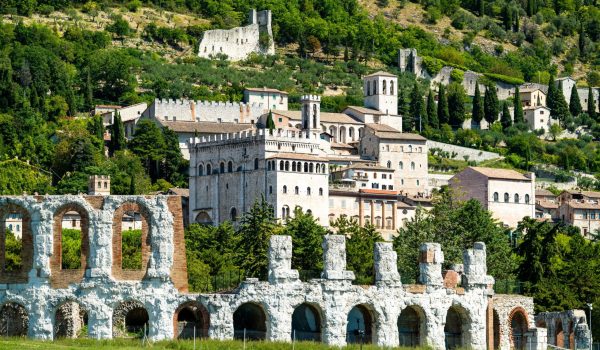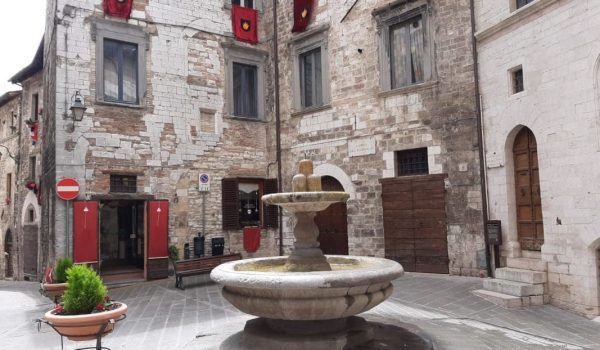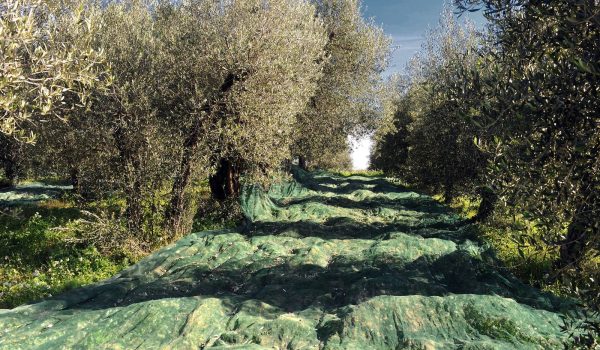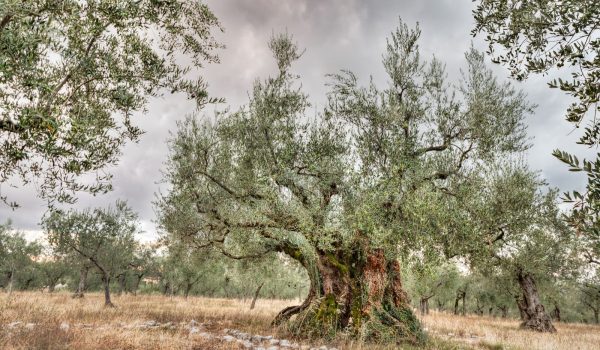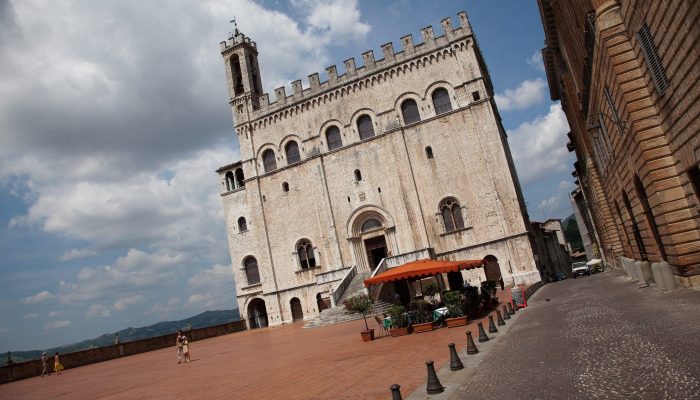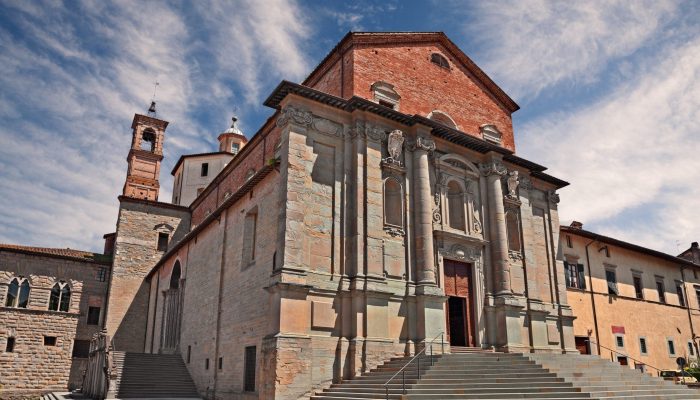What to do in Umbria in July? UmbriaSì tells you
July in Umbria: Music Festivals, Nature and Relaxation
Umbria, the green heart of Italy, transforms into an oasis of music and serenity in July. Its famous music festivals offer unique experiences, perfectly combined with a holiday immersed in nature and relaxation.
Here are our three tips on what to do in Umbria in July

Let yourself be enchanted by music festivals
July is the perfect time to enjoy Umbria’s most iconic festivals, such as Umbria Jazz in Perugia, which brings internationally renowned artists to the city’s historic squares and theaters. If you prefer classical music or contaminations between genres, the Festival dei Due Mondi in Spoleto will win you over with concerts, operas and shows immersed in the artistic beauty of the place.

Relax among hills and green panoramas
After an evening of music emotions, treat yourself to moments of pure relaxation in nature. Walk among the rolling Umbrian hills, enjoy a picnic on the shores of Lake Trasimeno, or choose a farmhouse with a swimming pool where you can recharge your batteries, surrounded by olive groves and vineyards.

Discover Umbria at your own pace
Between events, explore authentic villages such as Assisi, Spello or Gubbio, where time seems to have stopped. For a truly regenerating experience, take part in a light trek in the Sibillini Mountains or visit the suggestive Marmore Falls, perfect for immersing yourself in fresh and regenerating nature.

In Umbria, July is the perfect month to combine a passion for music with the desire to relax and be in touch with nature. Choose this unique land and let yourself be enveloped by the harmony of sounds, landscapes and traditions.
 We are waiting for you in Umbria
We are waiting for you in Umbria 

Umbria Jazz
Finalmente ritorna Umbria Jazz, l’evento musicale più atteso in Umbria!
Umbria Jazz è il festival musical dedicato al mondo del Jazz più importate in Italia e tra più influenti al mondo.
Un festival tra le note calde del Sax e quelle ritmiche della tromba che risuonano tra i vicoli del Centro Storico di Perugia e i suoi palchi distribuiti in location con cornici storiche mozzafiato, come il palco di Piazza IV Novembre, la Jazz Jam Session al Teatro Morlacchi, i concerti per i puristi alla Galleria Nazionale dell’Umbria, fino al Main Stage situato all’arena Santa Giuliana per i concerti dei grande artisti italiani e internazionali che hanno varcato la porta di Umbria Jazz.
Lo stesso Herbie Hancock, presente anche quest’anno ad Umbria Jazz, descrive così il festival:
“È il luogo in cui bisogna essere in questo periodo dell’anno”
Lo sapevi che Umbria Jazz è stato anche citato nella puntata n.16-stagione 33 de I Simpsons?

Ripercorriamo insieme le origini di Umbria Jazz
Nasce nel 1973 (quest’anno festeggia i suoi 50 anni!) per volontà di Carlo Pagnotta, gestore di una bottega di abbigliamento e soprattutto grande appassionato di musica Jazz che desiderava portare nella sua Umbria un festival dedicato a questo genere musicale. La storia narra che ebbe l’idea o la folgorazione Jazz in un bar storico di Via Mazzini, oggi chiuso.
Il primo concerto si svolse proprio ne 1973, nel teatro naturale della Villalago a Piediluco, in provincia di Terni. Altre location destinare ai palchi erano Perugia proprio in Piazza IV Novembre dove fecero il proprio esordio italiano i Weather Report, e ancora Gubbio, proprio per dare l’idea di un festival musicale che abbracciasse tutta l’Umbria.
Non è sempre filato tutto liscio…
Nei difficili e bollenti anni ‘70-’80, tra scontri e idee politiche contrastanti tra la “musica nera” e la “musica bianca”, Umbria Jazz non vide la luce dei palchi nel 1978 fino al 1982!

Il ritorno
L’anno della sua “rinascita” risale al 1982 con novità e cambiamenti come l’introduzione del biglietto di ingresso per alcuni concerti, fino ad allora gratuiti.
Nel 1985 nacque l’Associazione Umbria Jazz che gestisce l’evento e il marchio Umbria Jazz che invece rimane di proprietà della Regione Umbria.
Altra novità è la scelta di Perugia come città ospitante Umbria Jazz con solo alcuni concerti tenuti negli anni a Terni, Assisi, Gubbio. Oppure con l’edizione di Umbria Jazz Winter Edition che si tiene ogni anno a dicembre a Orvieto.
Le vie che suonano
Durate Umbria Jazz, che si tiene ormai da tradizioni per 10 giorni nel mese di luglio, è possibile assistere e ascoltare musicisti, jazzisti, cantanti che si esibiscono lungo tutto corso Vannucci, creando atmosfere uniche tra le note del Jazz, Blues, Gospel, Soul, Rhytm’n’Blues…
Famosi per i loro concerti itinerari sono, per esempio, i Funk Off!
La potenza è Umbria Jazz è l’aver creato un evento di Musica Jazz in Italia, con tutte le sfumature che vanno dal blues alla musica raggae, dal pop al soul, tra grandi artisti e artisti emergenti, tra musica “in strada” e grandi palchi. Un evento in grado di far emozionare e riunire tutti, grandi e piccini, sotto le note del Jazz.
Citando Alessandro Baricco nel suo monologo teatrale Novecento:
“Quando non sai che musica è,
allora è Jazz!”
Alcuni grandi artisti che hanno partecipato in questi anni a Umbria Jazz
Alicia Keys
Art Blakey
B.B. King
Carlos Santana
Diana Krall
Earth, Wind & Fire
Elton John
Eric Clapton
Herbie Hancock
Johnny Depp
Lady Gaga
Liza Minnelli
Massive Attack
Mika
Phil Collins
Pino Daniele
Prince
Simply Red
Stefano Bollani
Sting
The Chainsmokers
Tony Bennett
Vinicio Capossela
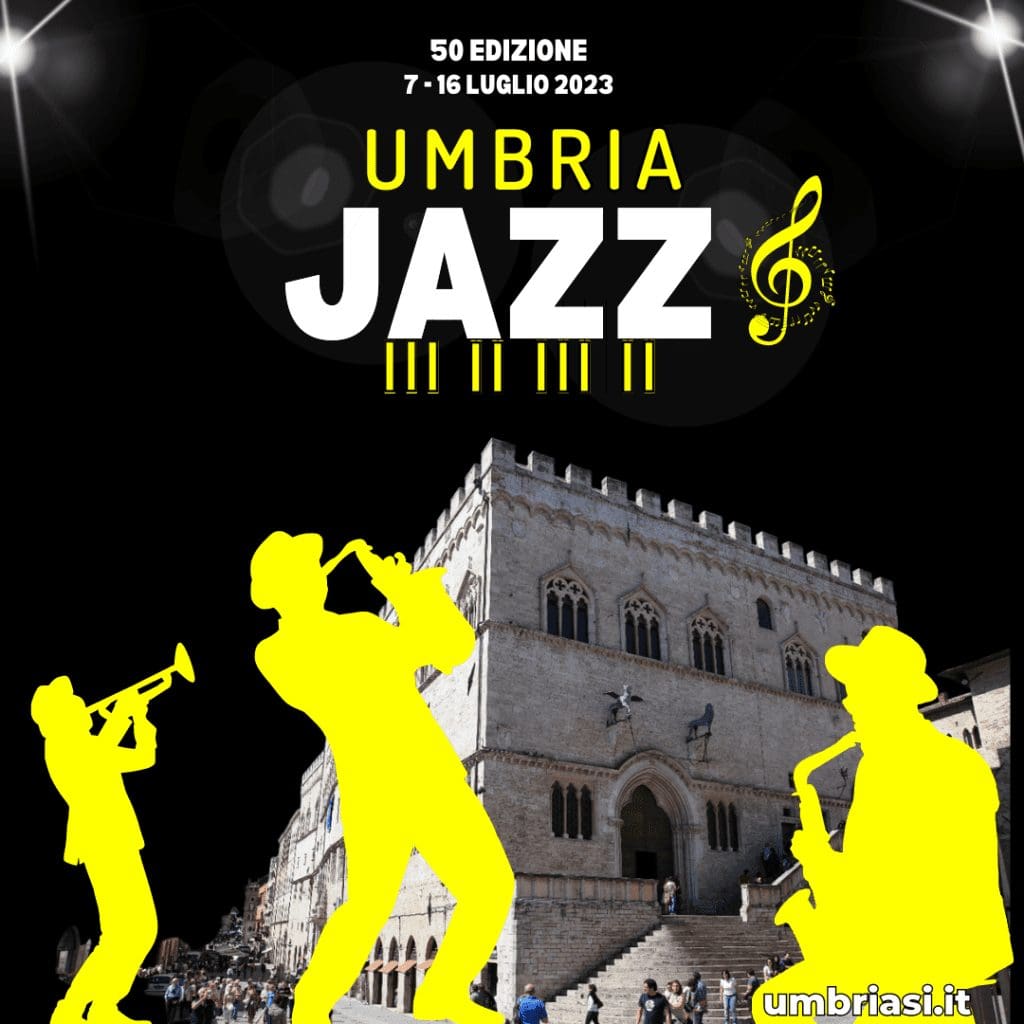

The Way of Francis from the north by foot
The Way of Francis from the north by foot
Starting from Euro 799,00 per person
1st day
ASSISI – SANCTUARY OF VERNA – PIEVE SANTO STEFANO (about 15 km – AVERAGE 5 HOURS)
Arrival in Assisi independently in the morning.
Our suggestion is to leave the car and find it again on the last day.
Transfer with one of our drivers towards the Sanctuary of La Verna. From here you start the walk in the direction of Pieve Santo Stefano.
Accommodation in the facility, dinner and overnight stay
2nd day
CITERNA – CITTA DI CASTELLO (about 20 km – MEDIUM – 7 HOURS)
In the morning after breakfast, transfer with one of our drivers from the Pieve Santo Stefano structure to the starting point of Citerna.
From here the path leads us to Città di Castello.
Accommodation in the facility, dinner and overnight stay
3rd day
PIETRALUNGA – GUBBIO (about 26 km – MEDIUM – 8 HOURS)
In the morning after breakfast, transfer with one of our drivers from the Città di Castello structure to the starting point in Pietralunga.
From here the path continues up to Gubbio
Accommodation in the facility, dinner and overnight stay
4th day
GUBBIO – VALFABBRICA (about 30 km – MEDIUM/DIFFICULT – 8 HOURS)
In the morning sightseeing tour of the city with the Gubbio Express
Continuation towards Valfabbrica
Accommodation in the facility, dinner and overnight stay
5th day – VALFABBRICA – ASSISI (about 15 km – EASY – 5 HOURS)
After breakfast we leave for the last journey of the journey which will lead to our destination: Assisi.
Accommodation in the facility, dinner and overnight stay
6th day – ASSISI
Morning dedicated to the discovery of Assisi
Notes
Every evening of the itinerary, overnight accommodation is provided in facilities such as the Pilgrim’s Refectory of the Santuario de La Verna, 3/2 star hotels, farmhouses and guest houses, along the route of Via di Francesco who have availability therefore guaranteeing overnight stay and dinner in the structure every night.
As regards the two trips that we normally feel like suggesting by car between Pieve Santo Stefano – Citerna and between Città di Castello – Pietralunga, they are included because the route, according to the many who have traveled the route is demanding and above all because it would force them to add two further overnight stays.
Our best offer is starting from €799.00 per person
The rate is per person and includes:
- 5 nights accommodation in a double room with half board (drinks included)
- Transfer services from Assisi to La Verna, from Pieve Santo Stefano to Citerna, from Città di Castello to Pietralunga
- Gubbio Express
- Pilgrim’s Credential
- Europ Assistance insurance
The rate does not include:
- Extras, tips and offers
- Lunches
- Luggage transport with the exception of the stages served by private transfer
- Means of transport
- City tax where introduced by the relevant municipality
- Anything not expressly indicated in the item “the rate includes”
Ask for information
Gallery

In the footsteps of the Templars
In the footsteps of the Templars
Starting from Euro 149.00 per person
Day 1 – GUBBIO
Arrival and accommodation in Gubbio.
Gubbio is not only one of the most beautiful medieval cities in Umbria, also known by the Roman name of Iguvium, rich in history, monuments and architectural works, but with its strategic position and its historical importance, it became an important center for the Templars in Italy: a crucial crossroads for travelers and pilgrims heading to Rome with a key role in the network of Templar settlements.
A tour with the Gubbio Express, a rubber-tyred train with audio-video guide will be your Cicerone to discover the history of the city, the Palazzo dei Consoli, the Palazzo Pretorio and all the wonders of the city’s urban planning.
Free lunch.
History tells that the Inquisition trial of the Templars was inaugurated in Gubbio, in the palace of the Church of Santa Croce della Foce.
Free dinner and overnight stay in Gubbio.
2nd day – GUBBIO – COSTACCIARO
After breakfast, you will go up with the suggestive cable car that takes you to the top at 850 meters of Monte Ingino where the Basilica of Sant’Ubaldo stands in which the remains of the saint, Patron Saint of Gubbio, are preserved in a bronze urn. The Basilica is also the centre of the fascination of the Corsa dei Ceri, which is kept here and which sees it as the finishing line, and which is celebrated every year on 15 May in honour of Sant’Ubaldo.
Once you have descended Mount Ingino, you cannot miss a visit to the remains of the ancient Roman theatre, dating back to 20 BC, and to the finds in the Antiquarium to discover the customs and traditions of Roman Gubbio.
Free lunch
In the afternoon we move towards Costacciaro, where there is not only the access point to the Monte Cucco Regional Park, characterized by the strong presence of the Order of the Temple, in the settlement of Sigillo ci with very rich testimonies of stones marked with the Templar Cross, but also the Church of San Francesco, another testimony of the passage of the Templars.
Free dinner and overnight stay in Gubbio.
Day 3 – VALFABBRICA
Before leaving Gubbio and Umbria, we suggest a stop at the Templar Castle of Casa Castalda in Valfabbrica rich in testimonies of the Knights Templar from the 12th to the 14th century, under the symbol of the cross pattée of the Militia Templi, identifying the Order of the Knights of the Time of Jerusalem.
Our best offer is starting from € 149.00 per person
The rate is per person and includes:
- 2 nights of accommodation with breakfast in a double or twin room
- Ticket for a tourist tour with Gubbio Express
- Ticket for the cable car
- Europ Assistance Travel Insurance
The rate does not include:
- Extras, tips and offers
- Museum entrance fees
- Means of transport
- City tax where introduced by the relevant Municipality
- Anything not expressly indicated in the “the rate includes” section
Ask for information
Gallery
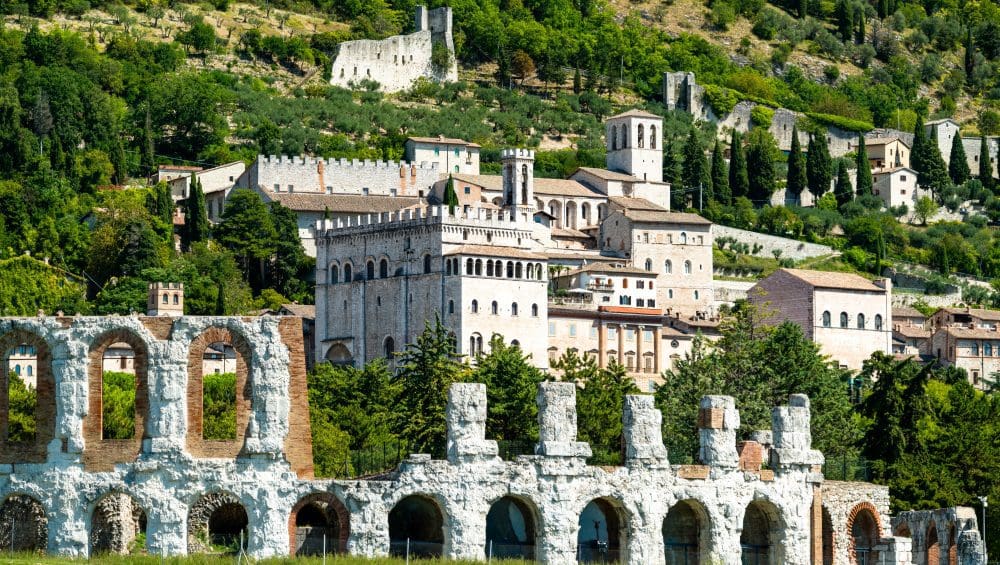
Gubbio: a stay amidst nature, culture, and biking
Gubbio: a stay amidst nature, culture, and biking
Gubbio is one of the most picturesque and charming medieval cities in Umbria. We have designed a tour with circular routes that can combine the ancient history of Gubbio, its artistic heritage, and pristine nature with biking proposals and a professional guide to explore the territory and its beautiful breathtaking panoramas.
Paths designed with varying levels of difficulty suitable for everyone: families, cycling enthusiasts, experienced bikers, etc
Choose which one is your favorite?
I CINQUE COLLI
The route is named after the symbol of the city of Gubbio, with the 5 hills representing the five hills behind the city. We start the ascent near the locality of Padule, which is immediately challenging but becomes easier after 2 km when we reach the paved road. This section is very scenic, and once we exit the vegetation, we find Monte Cucco and its valley to our right. Continuing, we reach the summit of Monte Ingino, where the wonder of the Basilica necessitates a stop to visit the place where the patron saint of Gubbio, St. Ubaldo, is located. The view over the city and the entire Eugubine plain is unique. Proceeding further, we cross two more hills with a steep ascent and, upon reaching the locality of Mocaiana, re-enter the city with a slight uphill.
Difficulty: DIFFICULT
Terrain: ASPHALT 30%
UNPAVED 50%
TRAIL 20%
LA PIANA EUGUBINA
An easy route that stretches across the local plains. The numerous roads bordering the agricultural fields create a fantastic network of paths protected by the surrounding hills. Ideal for starting a vacation in the area, admiring the beauty offered by nature, history, and our cuisine.
Difficulty: EASY
Terrain: ASPHALT 50%, DIRT ROAD 50%
PEDALANDO VERSO SUD SULLA VIA DI FRANCESCO
Sharing a short section of the Franciscan route with the many pilgrims traveling from Gubbio to Assisi, we start from the Vittorina church. After about 4 km, we reach the Ponte d’Assi area. Following the Mocaiana sign for about 800 meters and then turning left, the path becomes dirt, first on flat ground, then slightly uphill amidst olive groves and reforested areas of walnuts and cherries. We pass a green barrier and reach the summit. Here, the oak forest offers pleasant shade. Descending towards one of the lakes inside the Fassia Estate, artificial lakes built for irrigation, we climb again, keeping Gubbio to the left, returning to the asphalt road at a fast pace. We turn right and cross another hill, reaching the Colonnata area. The view here is fantastic; we are on the road leading to Perugia. We descend towards Gubbio and return, covering a section of the old Branca-Gubbio railway.
Difficulty: EASY
Terrain: ASPHALT 50%, DIRT ROAD 50%
DAL SOLE AL CASTELLO
The route winds through local crops for the first kilometers and then becomes completely flat. Heading east from the city, we reach the Torre dei Calzolari area, passing through dense woods and touching the Colmollaro Castle, a fief of the Raffaelli family, a marvel of our history. From here, we continue, passing through Branca, climbing along a dirt road until we reach a village with the Branca Castle. The route no longer has steep ascents, but continuous ups and downs make the return journey not too easy.
Difficulty: EASY
Terrain: ASPHALT 50%, DIRT ROAD 50%
TRA LE COLLINE EUGUBINE
Starting from the Vittorina church, a place of religious importance where St. Francis met and calmed the Wolf of Gubbio, we head south, crossing the main road. A few kilometers of asphalt, and the route becomes a dirt road. A small ascent allows us to admire a wonderful panorama of the Eugubian plain. We have reached the small hamlet of Monteluiano. From here, we climb on asphalt and then turn right. A series of ups and downs offer a unique view of the entire Eugubian valley. After a few kilometers, we descend and reach the Nerbisci hamlet. The return to the city is simple with a slight ascent. Passing through small villages, we return to the Stone City where the medieval era shines in all its facets.
Difficulty: MODERATE
Terrain: ASPHALT 50%, DIRT ROAD 50%
DA GUBBIO VERSO LA VALTIBERINA
A challenging route that unfolds entirely in the territory south of Gubbio. After an initial stretch on asphalt and a slight descent, we leave the plain to start the ascent on the hills bordering the Tiber Valley. Gubbio on our right and Mount Tezio on the left offer wonderful panoramic viewpoints. We descend quickly towards the westernmost point of the municipality of Gubbio, the Camporeggiano area (road leading to the Tiber Valley). There isn’t a single meter of flat terrain; it’s immediately uphill, returning towards the city of Gubbio.
Difficulty: MODERATE
Terrain: ASPHALT 40%, DIRT ROAD 60%
In addition to accommodation tailored to your needs, you can enhance your experience with:
- On-track lessons in e-bike and mountain biking for adults and children
- Tour with the Gubbio Express
- Ascent and descent with the Gubbio Cable Car
- Truffle tastings
- Beer tastings
- Museum visits
Ask for information
Gallery
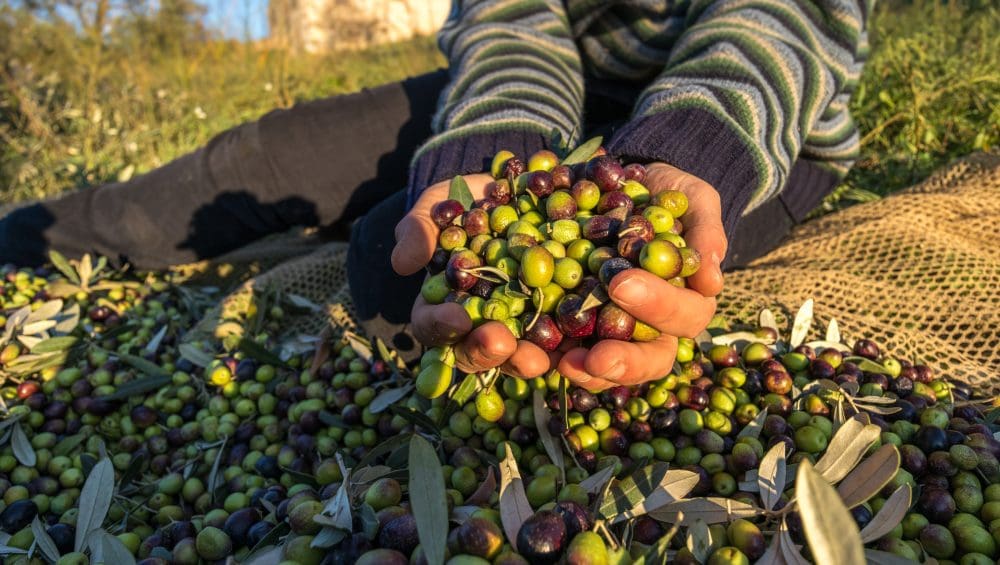
The green gold of Umbria
The green gold of Umbria
Starting from Euro 233,00 per person
The itinerary will lead you to discover Umbria’s green gold: Extra Virgin Olive Oil, traversing a territory rich in history and stories of its glorious past, centered around Trebbiano Spoletino.
1° day
Arrival in the early afternoon and free walk around Spoleto, city of the Festival dei Due Mondi and more recently known as the setting for the TV series “Don Matteo”. Enjoy a leisurely stroll through the historic city center, rich in artistic and cultural treasures, which have been made famous in recent years by the filming of “Don Matteo”. Throughout the year, the city offers entertainment opportunities such as festivals, exhibitions, and shows. Spoleto is a human-scale city, ideal for exploring on foot or by bike, and is an optimal starting point for our tours. Overnight stay in accommodation.
2° day
After breakfast, we will move near Trevi to visit the Museum of Olive Civilization and stop at an olive oil mill for a tasting of extra virgin olive oil. There’s an option to organize a bicycle ride along the Olive Belt that connects Spoleto to Assisi. Lunch on your own. In the afternoon, we continue to Campello sul Clitunno for a stroll through the village. Visit with a tasting at a Trebbiano Spoletino winery. Overnight stay in accommodation.
3° day
After breakfast, before returning to your destination, we suggest a stop at the Marmore Falls, with entrance to the park.
Our best offer is starting from € 233,00 per person
The rate is per person in a double room and includes:
- 2 nights of bed and breakfast
- Entrance to the Museum of Olive Civilization in Trevi
- Olive oil tasting with a small snack
- Tasting of Trebbiano
- Spoletino wine with a small snack
- Entrance to the Marmore Falls Park
- Umbria & Bike Kit
- Travel insurance by Europ Assistance
The rate does not include:
- Extras and tips
- City tax to be paid locally
- GPX tracks or detailed road map
- Luggage transportation along the route
- Bicycle rental
- Transportation
- Anything not expressly mentioned under “includes”
Ask for information
Gallery
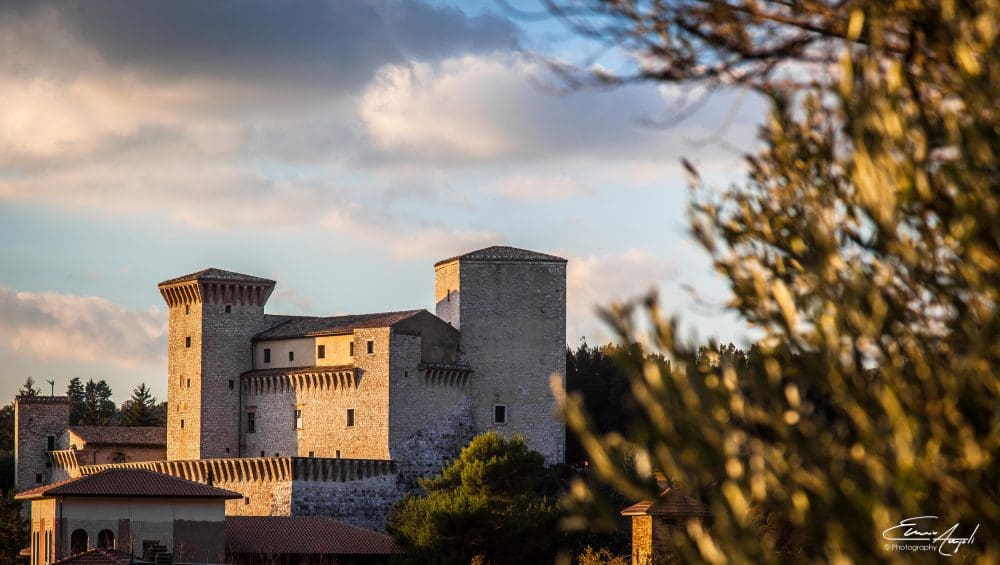
From Fortress to Fortress in the Trebbiano Territory
From Fortress to Fortress in the Trebbiano Territory
Starting from Euro 172,00 per person
The area extending between Spoleto, Castel Ritaldi, and Giano dell’Umbria is characterized by a landscape of gentle hills where the cultivation of Trebbiano Spoletino alternates with olive trees. The numerous fortresses and castles dominate the landscape, bearing witness to the importance of the Duchy of Spoleto in the Middle Ages.
1° day
Arrival in Spoleto in the early afternoon. Enjoy a leisurely walk through the historic city center, rich in artistic and cultural treasures, which have recently been made famous by the filming of “Don Matteo.” Throughout the year, the city offers various entertainment opportunities such as festivals, exhibitions, and shows. It is a human-scale city, ideal for exploring on foot or by bike, and serves as an excellent starting point for our tours. We suggest a walk through the village of Campello Alto.
Check-in at the accommodation for the overnight stay.
2° day
After breakfast, the walk, also possible by e-bike, will allow you to discover two villages in the area: Giano dell’Umbria, located at the foot of the Monti Martani, features its own castle and the notable Abbey of San Felice, with its 6th-century crypt housing the saint’s relics. Next, you’ll continue to Castel Ritaldi, formed from the merging of three medieval villages: Castel Ritaldi itself, Colle del Marchese, and Castel San Giovanni, where the castle was built by Cardinal Albornoz in 1376.
During the day, there will be a stop at a winery producing Trebbiano Spoletino for a tasting with a snack.
Check-in at the accommodation for the overnight stay.
3° day
After breakfast and before returning to your destination, there will be a stop at the Fonti of Clitunno, described by Goethe in his journey through Italy.
Our best offer is starting from € 172,00 per person
The rate is per person and includes:- 2 nights of bed and breakfast
- Tasting of Trebbiano Spoletino wine with a small snack
- Umbria & Bike Kit
- Assicurazione Viaggi Europ Assistance
- Extras and tips
- City tax to be paid locally
- GPX tracks or detailed road map
- Luggage transportation along the route
- Bicycle rental
- Transportation
- Anything not expressly mentioned under “includes”
Ask for information
Gallery

What to do in Umbria in June? UmbriaSì tells you
June in Umbria offers an irresistible mix of culture, relaxation and uncontaminated nature. The mild climate and long days invite you to explore fascinating villages, evocative landscapes and food and wine delights.
Here are our three tips on what to do in Umbria in June

Art, history and relaxation in the medieval villages
June is the ideal time to immerse yourself in the history and beauty of the Umbrian villages, without the crowds of the high season. Visit Spello, with its flower-filled streets and artistic masterpieces, or discover Bevagna, where the medieval atmosphere can be felt at every corner. Explore Todi or Gubbio, with its silent squares and breathtaking views. After a day of exploration, relax in a farmhouse immersed in in the green, enjoying the local cuisine.

Nature experiences: trekking and green walks
Umbria in June is a feast for nature lovers. Treat yourself to a hike in the Sibillini Mountains or a trek along the Sentiero degli Ulivi, which connects Assisi to Spoleto, crossing hills and olive groves. If you prefer a more relaxing day, organize a picnic on the shores of Lake Trasimeno or enjoy a walk in the shaded woods of Mount Subasio.

Outdoor food and wine: a journey through authentic flavors
June is perfect for enjoying unique outdoor culinary experiences. Discover the area’s excellence with a tour of the cellars of Montefalco, where Sagrantino is the protagonist, or stop in Trevi to taste the extra virgin olive oil, symbol of the region. Take part in a dinner under the stars at a local farm or at a village festival, where you can savor typical dishes such as torta al testo or strangozzi with truffle, accompanied by a good glass of wine.
 We are waiting for you in Umbria
We are waiting for you in Umbria 

Progetto La Contessa
Seguendo il percorso della storica strada “La Contessa” verso nord-est, che ha recentemente riaperto, l’iniziativa mira a offrire un’esperienza unica a tutti i visitatori.
Nell’ideale fil rouge interregionale, saranno valorizzati anche gli aspetti archeologici. Tutto da ammirare quindi il Teatro Romano di Gubbio e il suo Antiquarium, insieme alla collezione di iscrizioni conservate nel Museo civico di Palazzo dei Consoli. Per poi proseguire lungo l’antico tracciato della Flaminia e scoprire il poderoso Ponte Mallio a Cagli, il museo e il parco archeologico di Fossombrone (l’antica Forum Sempronii) e arrivare a Fano attraversando l’Arco di Augusto.
Unisciti a noi in questo viaggio alla scoperta delle meraviglie del nostro territorio e delle sue ricche tradizioni!
Il progetto sarà realizzato grazie al contributo del Comune di Gubbio, dell’assessorato regionale al turismo dell’Umbria e della Camera di commercio dell’Umbria

The Templars in Gubbio
Welcome to the heart of Umbria, where history blends with the charm of the Templars. Gubbio, a picturesque medieval city hides secrets that date back to the era of the Knights Templar. In this article, we will take you on a journey through time to discover the fascinating link between Gubbio and the Templars, offering a panoramic view of this ancient order and its traces in the heart of this city.
The history of the Templars
To fully understand the influence of the Templars in Gubbio, it is essential to take a look at their history. The Order of the Templars, also known as the Knights Templar, was founded in the 12th century during the Crusades in the Holy Land. These warrior-monk knights were famous for their military prowess, their religious devotion, and their incredible wealth.
The Templars played a significant role in the Crusades, defending Christian pilgrims and amassing vast amounts of wealth and property throughout the known world. Their influence also extended to Italy, and Gubbio was no exception. From a famous writing by a nobleman from Eugubino we read about a certain Knight Battista Sforzolini: “Battista Sforzolini, knight of the Temple of Jerusalem, was one of the bravest warriors of his time; he was always the first in all the most dangerous ventures; he never escaped danger, he almost overcame it with valor and wisdom, and in the most frightening battles he showed that a generous heart cannot find danger that frightens it.”
The Templars in Gubbio
Gubbio, with its strategic position and historical importance, became an important center for the Templars in Italy. This city was a crucial crossroads for travelers and pilgrims heading to Rome and played a key role in the network of Templar settlements in Italy. The Inquisition process was inaugurated in Gubbio, in the palace of the Church of Santa Croce della Foce and in the palace of the Bishopric.
Between Gubbio and the neighboring municipalities of Scheggia and Pascelupo, Scheggia, Costacciaro, Sigillo, Fossato di Vico… there are many traces and symbols such as the Templar crosses which testify to the presence of the Templars in the Umbrian land.
Gubbio is a hidden treasure for history buffs and those fascinated by the history of the Templars. This fascinating journey will allow you to discover the secrets of this ancient order and immerse yourself in the unique atmosphere of a city that has kept its Templar heritage alive over the centuries.

Commenti recenti
- A Taste of Umbria 5
- Accomodations 109
- Activity 9
- Attività 3
- Blog 43
- Christmas in Umbria 0
- Consigli 10
- Events in Umbria 5
- La Contessa: a door between land and sea 35
- Mystic Umbria 5
- Nature 2
- News 10
- Packages 28
- Recipe 8
- Taste 4
- Tips 15
- Umbria A Journey through Time 9
- Umbria Beactive 9
- Umbria For Family 6
- Umbria Jazz 6
-
Lionel Richie Umbria Jazz 2025 24 April 2025
-
Mika Umbria Jazz 2025 24 April 2025
-
Stay at Umbria Jazz 2025 24 April 2025
Via Settevalli, 320
06129 Perugia
Iscriviti per ricevere informazioni su pacchetti, offerte, eventi e manifestazioni in Umbria.
Privacy and Cookie Policy | Credits: GREEN CONSULTING
UMBRIAPERTA: BANDO PER IL SOSTEGNO ALL’ATTIVITÀ DI INCOMING” NUOVO PIANO DI SVILUPPO E COESIONE FSC”
Intervento relativo al Progetto “UmbriaSì per l’Incoming” è stato realizzato e finanziato con RISORSE FSC
La funzionalità del sito web è stato implementa con il sostegno delle risorse del Nuovo Piano di Sviluppo e Coesione FSC




